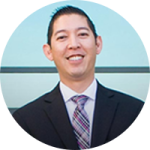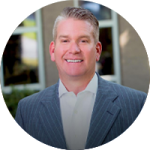How advisors are addressing the FIRE movement
How advisors are addressing the FIRE movement


The financial independence, retire early (FIRE) movement has attracted many devotees, particularly those under the age of 40. How are financial advisors helping to guide these clients, especially regarding their investment strategies?
An increasing number of people, especially the younger set, have been turned on to the financial independence, retire early (FIRE) movement. They are streamlining their spending and living within tight budgets, all while attempting to amass enough wealth to retire long before the traditional age of 65—some even in their 30s or 40s.
According to research published by Goldman Sachs at the end of 2021, “The youngest respondents are expecting to leave the workforce much earlier … with 25% of Generation Z respondents planning to retire before the age of 55. … Roughly 30% of those under age 40 believe they need 60% or less of their pre-retirement income in retirement, compared to Generation X respondents, who feel they need 80% of their pre-retirement income in retirement.”
The pandemic shutdowns and shifts in the workplace actually accelerated the popularity of the FIRE movement. Many people spent less while staying home more, or found they could work remotely or retire early in places where the cost of living is lower, including other countries.
“Layoffs and re-organizations may have given some people a taste of freedom,” FIRE blogger Pete Adeney told Kiplinger. “I think part of the ‘Great Resignation’ we’ve been reading about in the news is people taking early retirements and choosing to stay home with their kids or start something new.”
- The FIRE movement was inspired by the 1992 book “Your Money or Your Life,” written by Vicki Robin and Joe Dominguez. An important principle of the book: People should evaluate every expense in terms of the number of working hours it took to pay for it.
- FIRE is defined by frugality and extreme savings and investment, leading to early retirement and living off small withdrawals from accumulated funds.
- Proponents should closely track expenses, cut unnecessary spending, and determine their “FIRE number” (the amount needed to generate sufficient income in retirement).
- Pay off debt—especially high-interest debt—and maximize savings in tax-advantaged accounts.
- Find ways to boost income, such as taking a second job, starting a side business, or generating passive income (i.e., rental income).
- The FIRE movement continues to grow in prominence, with numerous books, forums, and blogs on the topic. Several variations of FIRE are being publicized, including lean FIRE, fat FIRE, barista FIRE, coast FIRE, and slow FIRE.
Sources: Kiplinger, Square, Investopedia
Some financial advisors love this trend, some not so much. For the advisors who are on board with the FIRE movement, how do they actively manage their clients’ investment portfolios and overall financial plans—including budgeting—so that clients can live without having to work a full-time job for 50 or 60 years, if not longer?
For this issue, Proactive Advisor Magazine asked several experienced financial advisors:
What do you think of the FIRE movement, and how has it affected how you work with clients?
Vice president of wealth planning at Simplified Wealth Management Inc. in Corona, CA
“I love the FIRE movement for a couple of reasons. First, I am passionate about helping people have a happy life by being a good financial resource for them. The financial-planning world can sometimes focus too much on sales and not enough on financial education. The whole structure is not as functional as it could be in helping clients to get where they should be.
“The FIRE movement comes to the forefront of that. It’s essentially another way to get clients to think about saving for the future by determining how much they need each month to live and the lump sum they will need to generate to get there.
“The typical definition of retirement sounds boring, but when packaged as the FIRE movement, it gets more people involved—it’s marketing. It’s more successful in some ways than the old-school conversation about retirement, which has produced no compelling new ideas for years. With the FIRE movement, there is more explanation of the details, and there’s also more incentive for people to save if they can retire early—that’s what gets them excited. However, not everyone in the FIRE movement wants to quit working altogether. It’s more about doing what they really want to do in life—what they’re passionate about—and not worrying about a paycheck.
“Second, I think the FIRE movement has the potential to make the world a better place because it encourages people to pay more attention to being financially independent. Financially independent individuals are able to give more monetarily back to their communities.
“Utilizing active investment management, with a focus on risk management, is 100% beneficial for clients involved in the FIRE movement—given the shortened time frames involved. But being a real active manager involves more than just actively managing their investments. There are more moving parts when it comes to the FIRE movement, and the details can vary depending on which part of the movement clients are in. Three examples are lean FIRE, fat FIRE, and barista FIRE.
“Lean FIRE means planning to live at substantially less than your current living standard in retirement. As such, a client doesn’t have to save quite as much—they just need to bridge the gap between now and when they file for Social Security benefits. Fat FIRE means saving enough to retire early without altering your current living standard. Barista FIRE is somewhere in the middle—still having a minimal lifestyle until retirement, but saving enough to retire early from full-time work. It is called ‘barista FIRE’ since many people in this category might still want to work part-time to fund things like travel or other ‘wants’ beyond daily living expenses.
“For clients involved in all three types, retiring early typically means at 50, not 65. Some people are extra lean and retire between 40 and 45, and a few want to retire at 35. But I advise clients not to retire too early if they haven’t earned enough credits to obtain Social Security benefits. Then they’re just missing out on free money. Even if they retire from their current job, they should find some sort of work to get to 40 credits for Social Security. Some people in the FIRE movement may not be calculating Social Security into their plans, so it’s important for their advisor to proactively educate them about this.
“It’s also necessary to actively coach clients about the changes they might need to make now to obtain their goals. One of the most important things about the FIRE movement is that it’s not necessarily all about money—it’s more about priorities. To give a simple example, some people in the gig economy might prefer to take a Friday off to get their car fixed with the cost of the repair being $200. People focused on FIRE might prefer to work that Friday and pay $250 on the weekend for someone to fix their car. Yes, it cost $50 more, but they made more than that by being able to work on Friday. It’s all about how badly they want to retire early and how they make budgetary and lifestyle choices now.”
Founder, president, and principal financial advisor of Essence Wealth & Insurance Services in Santa Clara, CA
“I work with many young people who want to retire at 50. Here in Silicon Valley, there are a lot of highly paid tech engineers, and some believe that around that age they may lose their edge in competing with younger people in their industry.
“Some say they will retire from their current job and then work for fun, and some say they just don’t want to work for anyone. Either way, their goal is to have enough passive income, including from real estate, to support their lifestyle to do whatever they want.
“Tactical management of their investments is very important, especially if their goal is to retire early. We can’t buy and hold everything in stocks and hope for the best—these clients just don’t have enough time to recover from a market correction. From my experience, tactical managers preserve and protect clients’ portfolios better because they are not going to wait until the market hits bottom before they get out. They have stop-loss strategies in place so they can get out before the markets get too low. They can even short the market.
“I have noticed that a lot of young people involved in the FIRE movement had previously signed up for robo-advisor accounts, but they still came to me after they tried them. That tells me that they value comprehensive financial planning. Moreover, the managers I’ve teamed up with—especially the tactical managers—historically have outperformed robo-advisors.
“Doing a comprehensive financial plan is very important, especially if someone wants to retire early. For example, if their goal is to retire in 10 years at age 40, they need to look at whether they can sustain 50 to 60 years of retirement with the money they currently have.
“Financial behavior is very important to know, which is why I ask a lot of questions to determine their budget and how they’re currently spending money. A lot of clients make good money but they’re still in debt because of their spending habits. So it’s important to address that. People should also consider the potential changes in their lives, such as getting married, having children, or upgrading their home. These life circumstances can alter their retirement goals.
“I tell them these are the options: Either you control your spending now so you can retire early, or you will need to be realistic about how much you want to spend and maybe wait a little longer to retire—say, maybe at 50 instead of 40. We also talk about other ways they can save on costs, such as moving to a less expensive part of the U.S. or even to another country. Those are the types of questions I need to ask.
“I want to emphasize that while investments are important, what people really need to do is create a comprehensive financial plan to project their future needs and live accordingly now.”
“Although my clients haven’t directly indicated they are a part of the FIRE movement, we certainly have a good number of younger clients. Many of these are doing quite well in their businesses, as well as in their investment strategies. Those who are in that category are socking away amounts that should propel them to financial success in a range of areas—including insurance needs, educational planning strategies for those with children, and retirement planning. In many cases, they also have intermediate-term strategies such as building cash-complement portfolios for funds over and above what they need in emergency cash, which is typically three to six months’ worth of living expenses in cash.
“Estate planning is important in conjunction with tax-mitigation strategies. It’s interesting to see younger clients who want to plan that far ahead using trusts, some to fund important charitable organizations they believe in. Many also have investments such as individual stocks or sectors they believe in.
“Two clients work for firms that either recently went public or have been purchased by a larger firm. One worked with one of the fastest-growing electric vehicle automakers and was granted qualified small-business stock. Tax strategies could come into play depending on IRS metrics when he received those shares because he’s basically a multimillionaire. Another, who works with a beverage company that was purchased by Coca-Cola, also unexpectedly became a millionaire instantly.
“They continue to work, but they reflect the first part of FIRE—financial independence. The client from the electric vehicle firm is going into another tech start-up, and the beverage client is working out the year but will be starting a long-dreamed-of business venture.
“Both of these clients either have a high interest in or are taking advantage of ‘qualified opportunity funds,’ otherwise known as ‘opportunity zones,’ to help mitigate their capital gains taxes and get access to real estate—which they agree is a great hedge against inflation. They can afford to hold for the 10 years necessary to get 100% capital gain-free investment outcomes from said opportunity zones.
“They also believe in what I like to call disruptive technologies, such as 5G, cloud computing, peer-to-peer payments such as Venmo, and green energy. We use ETFs to gain access to those sectors and get diversified portfolios to complement their individual holdings.
“I use algorithm-based portfolios, mostly for retirement assets, and these types of clients understand that most things in the new meta-universe are driven by algorithms. They are used to new technologies in many areas of their daily lives. They like that these investment solutions can help mitigate risk and volatility, while taking advantage of trends. Compared to more typical strategic asset allocations, active and tactical management seeks to minimize portfolio gyrations and can offer more potential downside protection, while trying to capture the upside of the equity markets. That said, we are always cognizant of tax implications for any investment strategy and strive to make sure actively managed strategies are appropriate for the objectives of any specific client.”
“The FIRE movement has become very popular recently and especially so in the physician community. FIRE can be an extreme solution to the underlying problems of stress and burnout. Sometimes, smaller changes like working less and adjusting lifestyle accordingly can lead to a happy and fulfilling life without going to the extreme measure of FIRE.
“Before someone jumps into the FIRE movement, it is important for them to think about what they want out of work and life and to answer the question of what financial independence means to them—because the answer is different for every person. I’ve seen people engage in unhealthy competition to achieve someone else’s definition of financial independence. They may sacrifice their present happiness for an imagined future that they ultimately realize they don’t want or like.
“For example, many of my physician clients don’t necessarily want to stop working entirely. They simply want to be secure enough to take more time for themselves, work less, or have the flexibility to create the schedule they want. There are also situations in which someone achieves FIRE but they are not happy or fulfilled because they spent so much time focusing on the future instead of enjoying life in the present.
“If someone is committed to FIRE, I think seeking out professional help is important so they can receive the necessary guidance. Overall, someone who is seeking FIRE needs to spend some time reflecting on what they really want and understanding the sacrifices needed to reach their goal.”
***
Advisors with clients enamored by the idea of retiring early from their full-time careers and being financially independent should make sure their clients thoroughly assess all of the factors involved in their quest. Clients should also be willing to pivot if life throws curve balls or if their priorities change.
Active management, not only of clients’ investment portfolios but also of their entire financial behaviors, can play a crucial role in helping them carry out their FIRE plans—however they choose to live in the future. Given the potential of a shortened time frame for earning power and investment growth, the threat of “retirement-date risk” has to be taken seriously. Many advisors find that active portfolio risk management is a sound solution, especially for their clients interested in the FIRE movement.
The opinions expressed in this article are those of the author and do not necessarily represent the views of Proactive Advisor Magazine. These opinions are presented for educational purposes only.
This article was originally published in Proactive Advisor Magazine on April 28, 2022 (Volume 34, Issue 4).
New this week:






